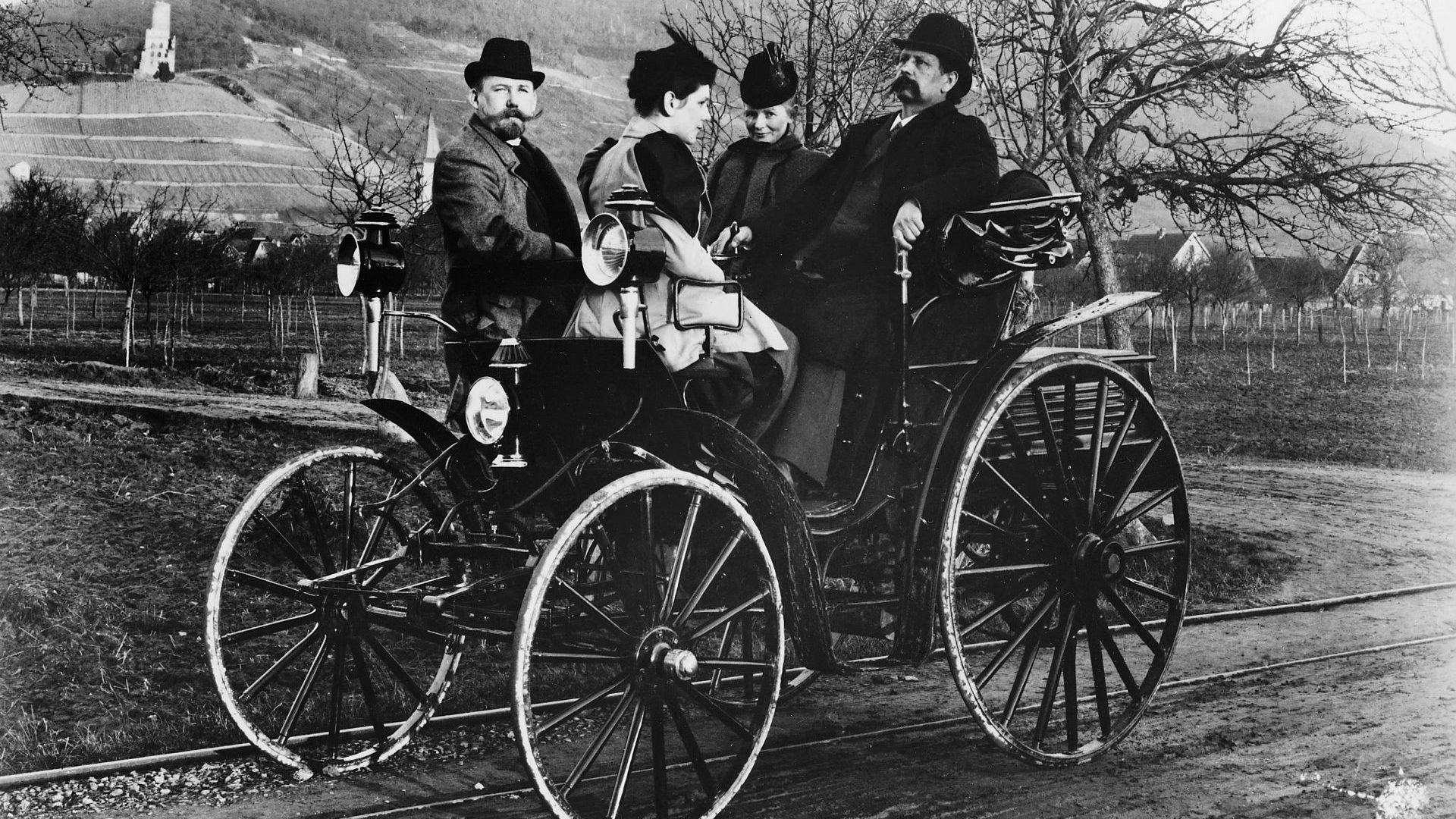In the early morning of August 5, 1888, a strange beast slipped out of the building where it was being stored. Looking somewhat like the result of a head-on crash involving a riding carriage and a tricycle, it was at the start of a 65-mile journey that would confirm the greatest hopes of its inventor – that here was the first practical motor vehicle, capable of travelling long distances.
This was the third model of the Benz Patent-Motorwagen, created by the gifted engineer and designer Karl Benz. But the man born Karl Friedrich Michael Vaillant in Mühlburg, south-west Germany, in 1844, was not behind the wheel on this landmark journey.
In common with so many of the great pioneers, Karl Benz could add to his own gifts the blessing of a truly formidable spouse. It had been Bertha Benz, daughter of a master carpenter-turned-property magnate, who had funded Karl’s business in the early days and now, as he worried about the Motorwagen’s safety, it was she who drove his invention into history.
Apparently without consulting her husband and in contravention of the law – tests of motor vehicles were supposed to cover short distances only, with engineers in tow – Bertha packed up her teenage sons Richard and Eugen and set off to the south from the Benz factory in Mannheim in the direction of Pforzheim. She had planned refuelling stops at pharmacies, picking up bottles of ligroin, a petrol-based cleaning fluid, while pit stops at streams and horse troughs were also required since the vehicle had yet to be fitted with a radiator.
As creative as she was daring, Bertha proved capable of fixing whatever mechanical problems she encountered on her long drive south at speeds of up to 10mph. Having noticed the wear that occurred when slowing the vehicle during long descents, she simply invented brake lining. A slightly baffled cobbler was called on to nail strips of leather to the Model 3’s brake blocks.
Come nightfall, Bertha, Eugen and Richard rolled into Pforzheim, and the future of Karl’s invention was utterly transformed. Whether Bertha’s away day was truly a surprise to Karl seems unlikely given everything else we know about the man – the importance of publicity was never wasted on Benz, whose passion for stunts made him an early pioneer of auto racing. However, when Bertha’s celebratory telegram arrived, Karl Benz’s claim to be called “the father of the automobile” no longer appeared open to question.
While Bertha had a comfortable childhood, there was plenty of hardship in the life of Karl, who became a Benz when his parents married after his birth. But despite losing his father to pneumonia while still an infant, Karl for the most part grew up unaware that his family was severely impoverished.
Determined to shield her only child from life’s harsh realities, Josephine Benz, recognising the infant Karl’s flair for sciences, secured him a place at the local lyceum. While there, an initial interest in locksmithing was quickly eclipsed by a passion for locomotive engineering, his late father’s area of expertise.
From here, it would be nice to think that the road to high estate was easy. Nice but completely inaccurate for, after graduating from Karlsruhe’s polytechnic school aged 19, Karl spent seven years flitting between trades, failing to find one that satisfied his creative urges.
And when, at the age of 27, he finally did go into business with August Ritter, their company – the Mannheim Iron Foundry and Mechanical Workshop – almost went bust within the first 12 months. It was only thanks to Bertha, then Karl’s fiancee, offering to buy out the unreliable Ritter that the firm kept afloat.
Between 1872 and 1890, Bertha brought five children into the world. Karl, meanwhile, patented a two-stroke engine that quickly became standard throughout the automotive industry. During this fruitful period, he also patented the first speed regulation system, the spark plug, the carburettor, the clutch, the gear shift, and the water radiator.
But still the problems continued to mount up. It wouldn’t be until Karl realised his dream of owning a bicycle factory in 1883 that the Benz success story really gathered speed.
His love of bikes eclipsed solely by his appetite for invention, Karl was keen to make the horseless carriage a reality, a feat he accomplished within just 24 months.
The Benz Patent-Motorwagen wasn’t without its flaws, mind you – it was a notoriously tricky steer and was almost as bad at climbing hills as it was at going down them. “My first customer was a lunatic; my second had a death wish,” Benz reflected later.
However, Karl had his start. And three years later, courtesy of Mrs Benz’s derring-do, he had the world at his feet.
By the last year of the 19th century, Benz was the biggest car company on the planet, producing over 570 vehicles annually. The early 1900s saw the company embrace automobile racing and the creation of more affordable models, culminating in the creation of the Velocipede, arguably the world’s first production car.
With competition from the late Gottlieb Daimler’s firm ensuring he never rested on his laurels, Karl pushed his invention to new limits, creating the Blitzen Benz which established a land speed record of 141mph at Brooklands in 1909, a mark that wouldn’t be bettered for over a decade.
By which time, the world was a very different place. Post-first world war hyperinflation saw the average cost of a car rise from 600 to an unbelievable 25 million marks. Merging with Daimler enabled Karl to weather the storm, by the end of which the newly formed Mercedes-Benz was positioned to dominate a new age for powered transport.
It was an age Karl wouldn’t live to see – he died from a bronchial condition in 1929. He missed the Great Depression, which dented the family finances and may have been why his wife initially embraced Adolf Hitler, enthusiastically declaring him “the saviour of Germans” when the two first met in 1933.
Better to remember Bertha for later distancing herself from the Nazis once it emerged they had ambitions beyond constructing autobahns and developing punctual public transport.
Better still to recall that August day in 1888 when Bertha popped the kids in the world’s first family car and took it out for a spin; an event so ground-breaking that it is celebrated biannually with a vintage car rally along the original route. It was a journey that changed everything, the perfect marriage of inspiration and perspiration, of genius and grit.



